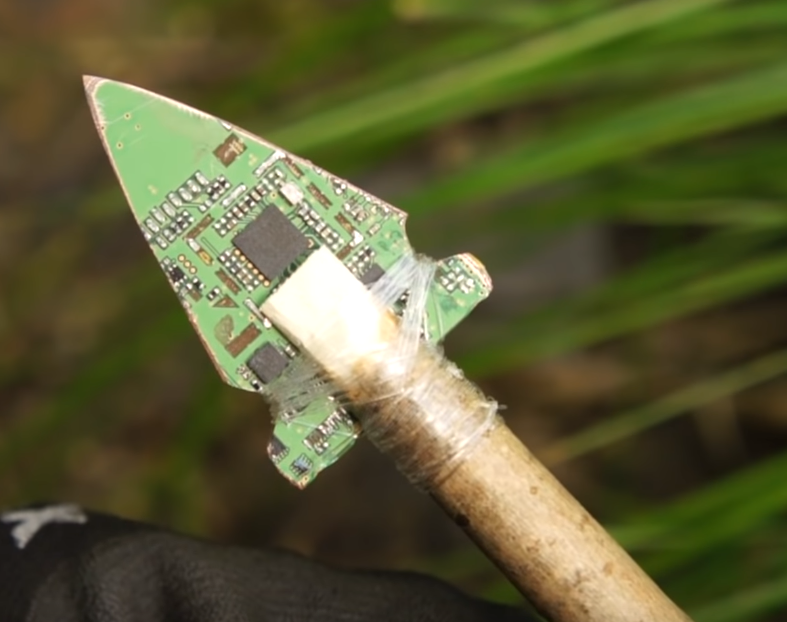So, I am thinking about getting myself a NAS to host mainly Immich and Plex. Got a couple of questions for the experienced folk;
- Is Synology the best/easiest way to start? If not, what are the closest alternatives?
- What OS should i go for? OMV, Synology’s OS, or UNRAID?
- Mainly gonna host Plex/Jellyfin, and Synology Photos/Immich - not decided quite what solutions to go for.
Appricate any tips :sparkles:
I have proxmox on bare metal, an HBA card to passthrough to TrueNAS Scale. I’ve had good luck with this setup.
The HBA card is to passthrough to TrueNAS so it can get direct control of the drives for ZFS. I got mine on eBay.
I’m running proxmox so that I can separate some of my processes (e.g. plex LXC) into a different VM.
I’d love to find out more about this setup. Do you know of any blogs/wikis explaining that? Are you separating the storage from the compute with the HBA card?
This is a fairly common setup and it’s not too complex - learning more about Proxmox and TrueNAS/ZFS individually will probably be easiest.
Usually:
-
Proxmox on bare metal
-
TrueNAS Core/Scale in a VM
-
Pass the HBA PCI card through to TrueNAS and set up your ZFS pool there
-
If you run your app stack through Docker, set up a minimal Debian/Alpine host VM (you can technically use Docker under an LXC but experienced people keep saying it causes problems eventually and I’ll take their word for it)
-
If you run your app stack through LXCs, just set them up through Proxmox normally
-
Set up an NFS share through TrueNAS, and connect your app stack to that NFS share
-
(Optional): Just run your ZFS pool on Proxmox itself and skip TrueNAS
I already run proxmox but not TrueNAS. I’m really just confused about the HBA card. Probably a stupid question but why can’t TrueNAS access regular drives connected to SATA?
The main problem is just getting TrueNAS access to the physical disks via IOMMU groups and passthrough. HBA cards are a super easy way to get a dedicated IOMMU group that has all your drives attached, so it’s common for people to use them in these sorts of setups. If you can pull your normal SATA controller down into the TrueNAS VM without messing anything else up on the host layer, it will work the same way as an HBA card for all TrueNAS cares.
(TMK, SATA controller hubs are usually an all-at-once passthrough, so if you have your host system running off some part of this controller it probably won’t work to unhook it from the host and give it to the guest.)
-
This is a great way to set this up. I’m moving over to this in a few days. I have a temporary setup with ZFS directly on Proxmox with an OMV VM for handling shares bc my B450 motherboard IOMMU groups won’t let me pass through my GPU and an HBA to separate VMs (note for OP: if you cannot pass through your HBA to a VM, this setup is not a good idea). I ordered an ASRock X570 Phantom Gaming motherboard as a replacement ($110 on Amazon right now. It’s a great deal.) that will have more separate IOMMU groups.
My old setup was similar but used ESXi instead of Proxmox. I also went nuts and virtualized pfSense on the same PC. It was surprisingly stable, but I’m keeping my gateway on a separate PC from now on.
If you can’t pass through your HBA to a VM, feel free to manage ZFS through Proxmox instead (CLI or with something like Cockpit). While TrueNAS is a nice GUI for ZFS, if it’s getting in the way you really don’t need it.
TrueNAS has nice defaults for managing snapshots and the like that make it a bit safer, but yeah, as I said, I run ZFS directly on Proxmox right now.
Oh sorry for some reason I read OMV VM and assumed the ZFS pool was set up there. The Cockpit ZFS Manager extension that I linked has good management of snapshots as well, which may be sufficient depending on how much power you need.
If you want a “setup and forget” type of experience, synology will serve you well, if you can afford it. Of you are more of a tinkerer and see yourself experimenting and upgrading in the future, then I recommend custom built. OMV is a solid OS for a novice, but any Linux distro you fancy most can do the job very well!
I’ve started my NAS journey with a very humble 1-bay synology. For the last few years I am using a custom built ARM NAS (nanopi m4v2), with 4-bays and running Armbian. All my services run on docker, I have Jellyfin, *arr, bitwarden and several other servicies running very reliably.
And if you’re not sure how much of tinkering you want to do a Synology with docker support is a good option.
Synology is generally a great option if you can afford the premium.
Unraid is a good alternative for the poor man. Check this list of cases to build in. I personally have a Fractal R5 which can support up to 13 HDD slots.
Unraid is generally a better bang for your buck imo. It’s got great support from the community.
My Synogy NAS was super easy to set up and has been very solid. Very happy with it. I’m sure there’s other solutions though.
I went with Synology for my Plex sever. I chose to use a docker container to run it instead of the normal Plex server app they have available. I found some YouTube videos on the setup and it was fairly straight forward. Now that it’s setup I rarely have to think about it, other than the occasional update. I now have to update the docker image instead of just letting Plex update itself.
I went this route because I didn’t want to have to maintain a desktop for my Plex server, which I had done since Plex was first released. But I also didn’t want to have a new sys admin hobby just to watch some videos. Rolling my own raid felt like it would end up that way.
Just throwing out an option, not saying it’s the best:
If you are comfortable with Linux (or you want to be come intimately familiar with it), then you can just run your favorite distribution. Running a couple of docker containers can be done on anything easily.
What you’re losing is usually the simple configuration GUI and some built-in features such as automatic backups. What you gain is absolute control over everything. That tradeoff is definitely not for everyone, but it’s what I picked and I’m quite happy with it.
Yeah already quite familiar, already got a server but looking for something more premium, but essentially deliver the most easy platforms for the rest of the family to use.
I have a qnap. I have had no issues. It runs its own qts OS so no need to figure out what you want to run. Make sure the hardware is x86. Plex runs better on x86.
Do people not like TrueNAS?
ZimaBoard 832 with two 2TB SSDs and OMV is my setup. Pair it with tailscale for availability wherever you go.
I wasn’t a fan of Immich. Although I’m trying to replace Google photos soy opinion is a bit skewed.
Acronyms, initialisms, abbreviations, contractions, and other phrases which expand to something larger, that I’ve seen in this thread:
Fewer Letters More Letters ESXi VMWare virtual machine hypervisor LXC Linux Containers NAS Network-Attached Storage Plex Brand of media server package RAID Redundant Array of Independent Disks for mass storage SATA Serial AT Attachment interface for mass storage SSD Solid State Drive mass storage k8s Kubernetes container management package
8 acronyms in this thread; the most compressed thread commented on today has 7 acronyms.
[Thread #164 for this sub, first seen 24th Sep 2023, 20:25] [FAQ] [Full list] [Contact] [Source code]
The most common software choices are TrueNAS and UNRAID.
Depending on your use-case, one is better than the other:
TrueNAS uses ZFS, which is great if you want to be absolutely sure the unreplaceable data on your disks is 100% safe, like your personal photos. UNRAID has a more flexible expansion and more power efficient, but doesn’t prevent any bit flip, which is not really an issue if you only store multimedia for streaming.
If you prefer a hardware solution ready to use, Synology and QNAP are great choices so long you remember to use ZFS (QNAP) or BTRFS (Synology) as filesystem.
Unraid 6.12 and higher has full support for ZFS pools. You can even use ZFS in the Unraid Array itself - allowing you to use many, but not all, of ZFS extended features. Self healing isn’t one of those features, though, it would be incompatible with Unraid’s parity approach to data integrity.
I just changed my cache pool from BTRFS to ZFS with Raid 1 and encryption, it was a breeze.
I generally recommend TrueNAS for projects where speed and security are more important than anything else and Unraid where (hard- and software-)flexibility, power efficiency, ease of use and a very extensive and healthy ecosystem are more pressing concerns.
Do either of them matter in terms of life of the hardisks? My server just had one of its HDDs reach EoL :| Kind of want to buy something that will last a very long time. Also, not familiar with ZFS, but read that Synology uses Butterfs - which always sounds good in my ears, been having a taste of the filesystem with Garuda on my desktop.
Yes, ZFS is commonly known for heavy disk I/O and also huge RAM usage, the rule used to be “1GB of RAM for every TB of disk” but that’s not compulsory.
Meanwhile, about BTRFS, keep in mind that Synology uses a mixed recipe because the RAID code of BTRFS is still green and it’s not considered production ready. Here’s an interesting read about how Synology filled the gaps: https://daltondur.st/syno_btrfs_1/
The only place ZFS seems to use a sizable amount of RAM is for the arc memory cache system which is an really nice feature when you have piles of small file access going on. For me some of the most high access things are the image stores for lemmy and mastodon that combine up to just under 200GB right now but are some crazy high number of files. Letting the system eat up idle ram to not have to pull all those from disk constantly is awesome.
Unraid is great. Don’t let the FOSS heads say otherwise.
I paid $100 3 years ago, ONCE. Best purchase I’ve ever made.
I’ve tried the foss alternatives after getting familiar with unraid, and I still prefer unraid.
I’ve found CasaOS to be the simplest to set up and get going.











